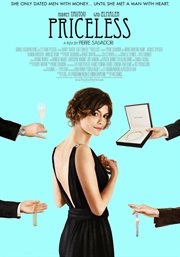Chanel's Riviera Glamour, decadence, and survival in peace and war, 1930-1944
Book - 2020
"In this captivating narrative, Chanel's Riviera explores the fascinating world of the Cote d'Azur during a period that saw the deepest extremes of luxury and terror in the twentieth century. The Cote d'Azur in 1938 was a world of wealth, luxury, and extravagance, inhabited by a sparkling cast of characters including the Duke and Duchess of Windsor, Joseph P. Kennedy, Gloria Swanson, Colette, the Mitfords, Picasso, Cecil Beaton, and Somerset Maugham. The elite flocked to the Riviera each year to swim, gamble, and escape from the turbulence plaguing the rest of Europe. At the glittering center of it all was Coco Chanel, whose very presence at her magnificently appointed villa, La Pausa, made it the ultimate place to be. B...orn an orphan, her beauty and formidable intelligence allured many men, but it was her incredible talent, relentless work ethic, and exquisite taste that made her an icon. But this wildly seductive world was poised on the edge of destruction. In a matter of months, the Nazis swooped down and the glamour of the pre-war parties and casinos gave way to the horrors of evacuation and the displacement of thousands of families during World War II. From the bitter struggle to survive emerged powerful stories of tragedy, sacrifice, and heroism. Enriched by original research and de Courcy's signature skill, Chanel's Riviera brings the experiences of both rich and poor, protected and persecuted, to vivid life."--
- Subjects
- Genres
- Biographies
- Published
-
New York :
St. Martin's Press
2020.
- Language
- English
- Main Author
- Edition
- First U.S. edition
- Physical Description
- x, 293 pages, 16 unnumbered pages : illustrations (some color) ; 25 cm
- Bibliography
- Includes bibliographical references (pages 279-282) and index.
- ISBN
- 9781250177070
- List of Illustrations
- Introduction
- Prologue
- 1. 1930, the Beginning: La Pausa
- 2. Misia Sert and Her Circle
- 3. Fun, Games and the Beginning of Terror
- 4. Love and Glamour on the Sunshine Coast
- 5. Socialism and Mrs Simpson
- 6. 1937, the Rise of Schiaparelli
- 7. The Shadow of War
- 8. 'La drôle de guerre'
- 9. June 1940
- 10. The Vichy Government
- 11. 'A German Victory is Certain'
- 12. The Brutal Antisemitism of Vichy; Italian Protection
- 13. Escapes, Captures and Starvation Rations
- 14. Trying to Survive
- 15. Dubious Activities
- 16. The Resistance Grows Stronger, the Starving People Weaker
- 17. Last Days
- Epilogue
- Acknowledgements
- Bibliography
- Index
Review by Publisher's Weekly Review
Review by Kirkus Book Review

